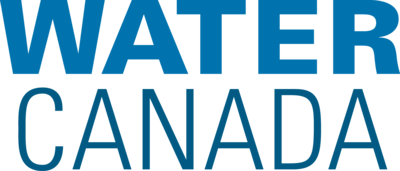WC144 SeptOct 2025 - Magazine - Page 12

DRINKING WATER
contaminant levels (MCLs). This article presents an overview of
treatment technologies, their advantages and limitations, and the
implications of emerging regulatory trends for Canadian municipalities and water professionals.
The regulatory landscape
Until recently, Health Canada had set a drinking water screening
value of 200 ng/L for PFOS and 600 ng/L for PFOA. However,
in August 2024, Health Canada set a new objective of 30 ng/L for
the combined total of 25 PFAS compounds in treated drinking
water, reflecting advances in both analytical methods and treatment capabilities. The included PFAS are covered under USEPA
Method 533 for drinking water.
The U.S. EPA finalized its first-ever National Primary Drinking
Water Regulation (NPDWR) in April 2024. The enforceable limits
are as low as 4 ng/L for PFOA and PFOS and 10 ng/L for PFHxS,
PFNA, and HFPO-DA (GenX). It also establishes a hazard index
limit of 1 for the mixture containing two or more of the following
PFAS: PFNA, PFHxS, GenX, and PFBS. This regulatory shift is
already prompting proactive investments in PFAS treatment infrastructure across many U.S. municipalities, providing a model that
Canadian utilities may soon follow.
Current and emerging approaches
Conventional treatment processes in full-scale drinking water treatment plants have generally shown limited effectiveness in removing
PFAS from source water, and in some cases, PFAS was found to increase after treatment, due to degradation of precursor compounds
(often unknown) to more persistent, known PFAS. This highlights
the complex, and sometimes unexpected interactions PFAS can
have with existing treatment infrastructure, reinforcing the need
12
WATER C AN ADA • SEP TEMBER/OCTOBER 2025
for site-specific evaluation and process optimization. As a
result, there has been growing interest in exploring advanced
treatment technologies to address this complex water treatment
challenge.
Achieving sub-ppt targets for individual PFAS or the broader 30 ng/L group total demands a multi-barrier approach,
combining adsorption, ion exchange, filtration, and in some
cases, destructive processes. Let’s explore how these technologies are evolving to meet the challenge.
Granular Activated Carbon (GAC) remains one of the most widely
applied technologies for PFAS removal. Canadian pilot studies
confirm that long-chain PFAS like PFOA and PFOS can be
reduced by over 90 per cent. However, shorter-chain compounds, like PFHxA or HFPO-DA, are less strongly adsorbed.
Its performance depends on bed life, influent chemistry, and
presence of organic matter. Officials emphasize that GAC alone
may not be enough to hit the 30 ng/L total, especially where
short-chain PFAS predominate. Still, with proper residuals
management, it remains a cost-effective first line of defense.
Ion Exchange Resins (IEX), particularly anion exchange types,
show high affinity for both long- and short-chain PFAS.
Synthetic anion-exchange (AIX) resins designed specifically
for PFAS are increasingly common, especially in Europe and
North America. They generally offer higher capacity and faster
kinetics than GAC. The key advantage is that AIX handles
compounds that GAC struggles with, making it ideal for
dual-GAC/AIX trains. Resin systems can operate down to
trace-level concentrations, making them ideal for automated,
continuous treatment. However, resin exhaustion results in
PFAS-laden waste which is typically incinerated. Regeneration
is not common due to complexity in PFAS waste handling.
Walkerton Clean Water Centre
The Walkerton Clean Water Centre (WCWC) in Walkerton, Ontario, serves as a hub for drinking water training, pilot testing, and research.